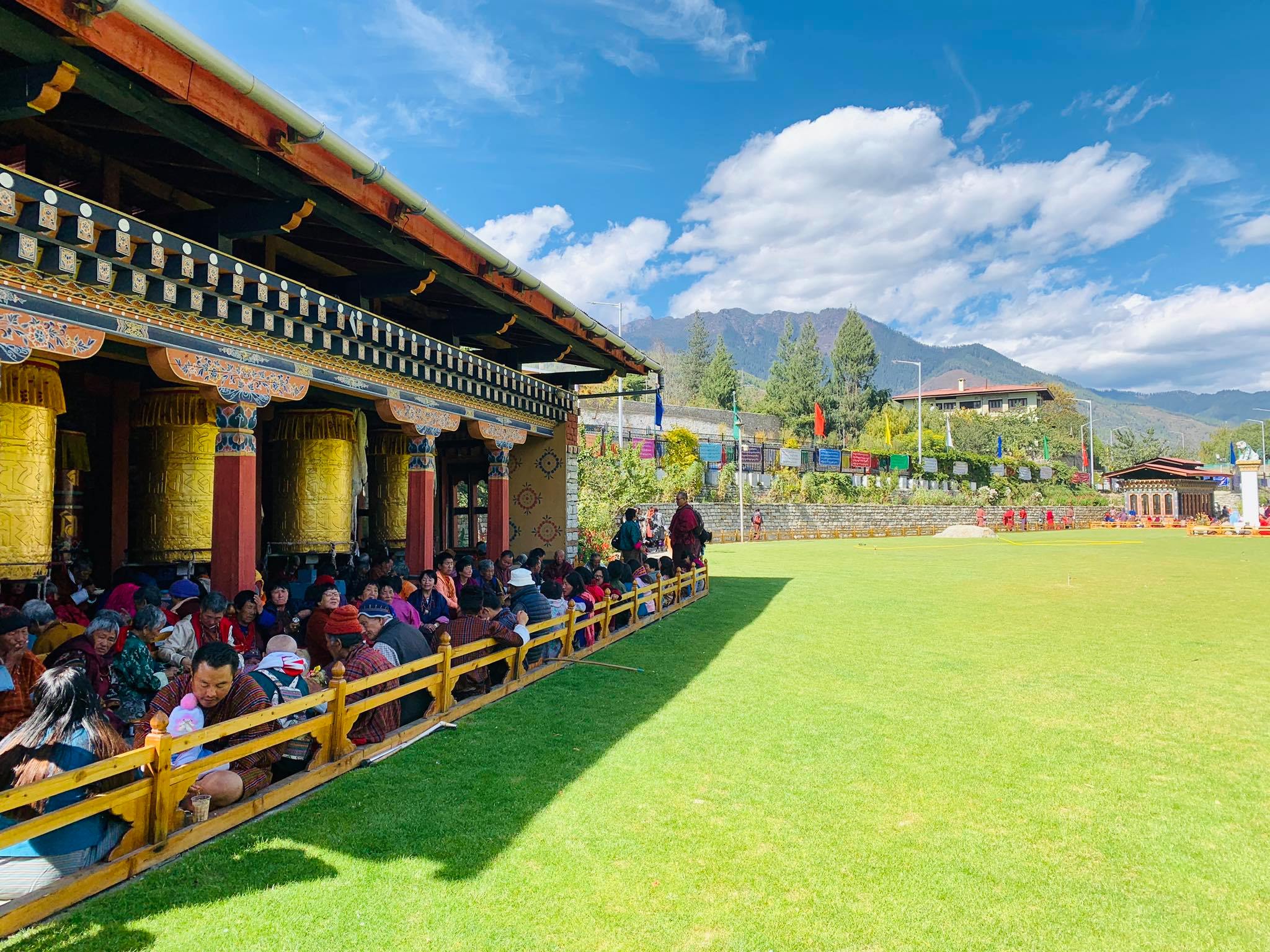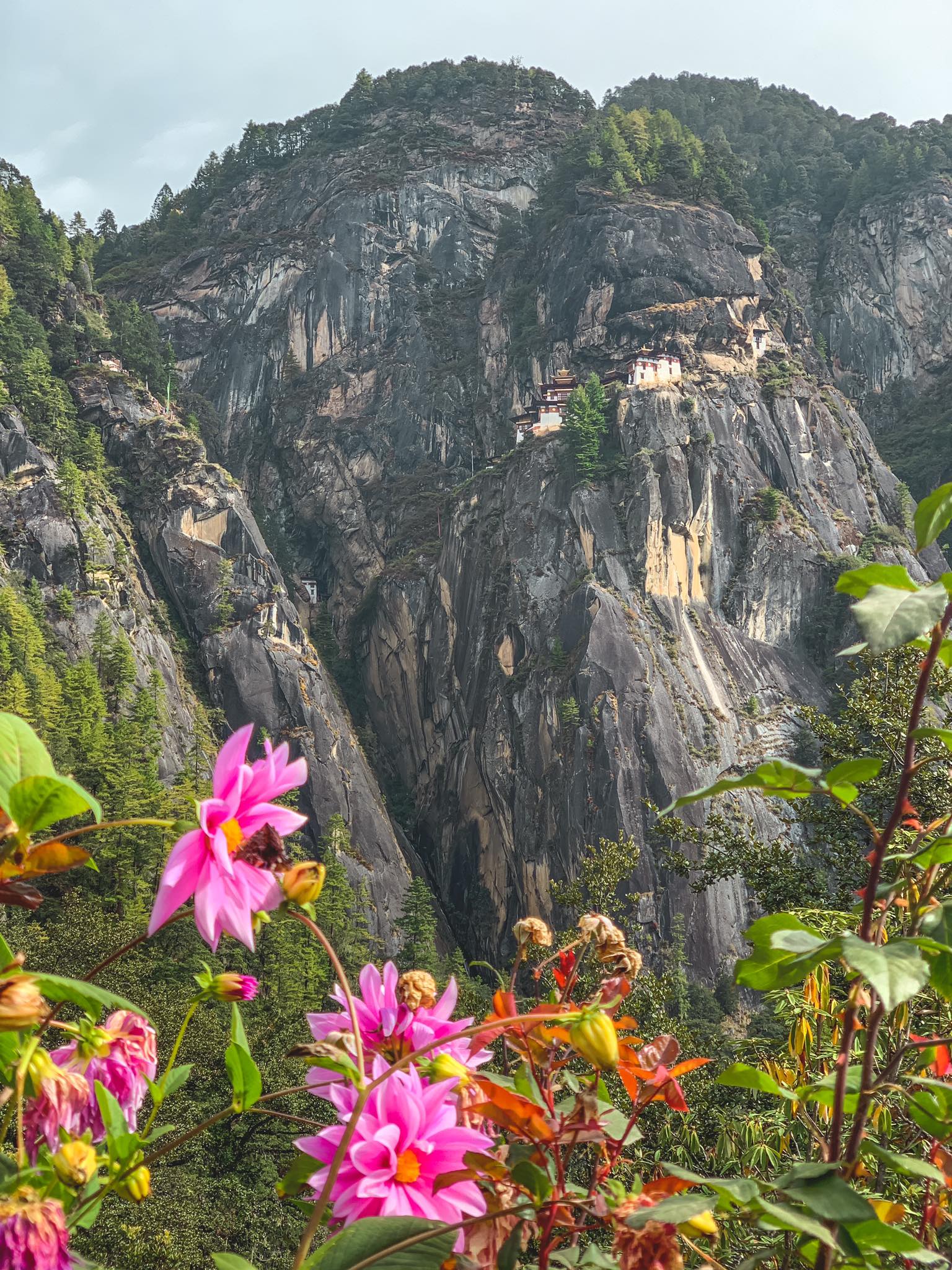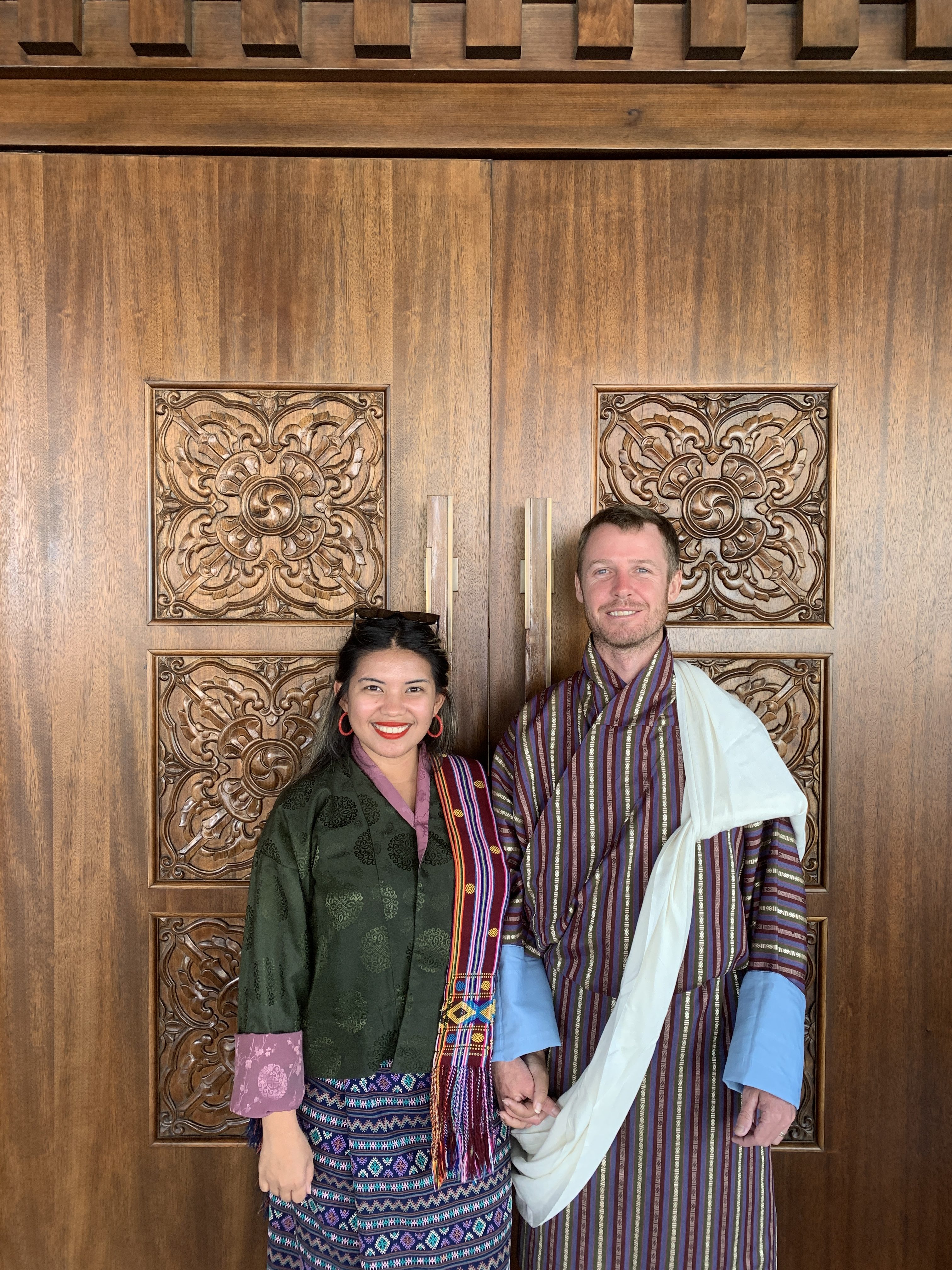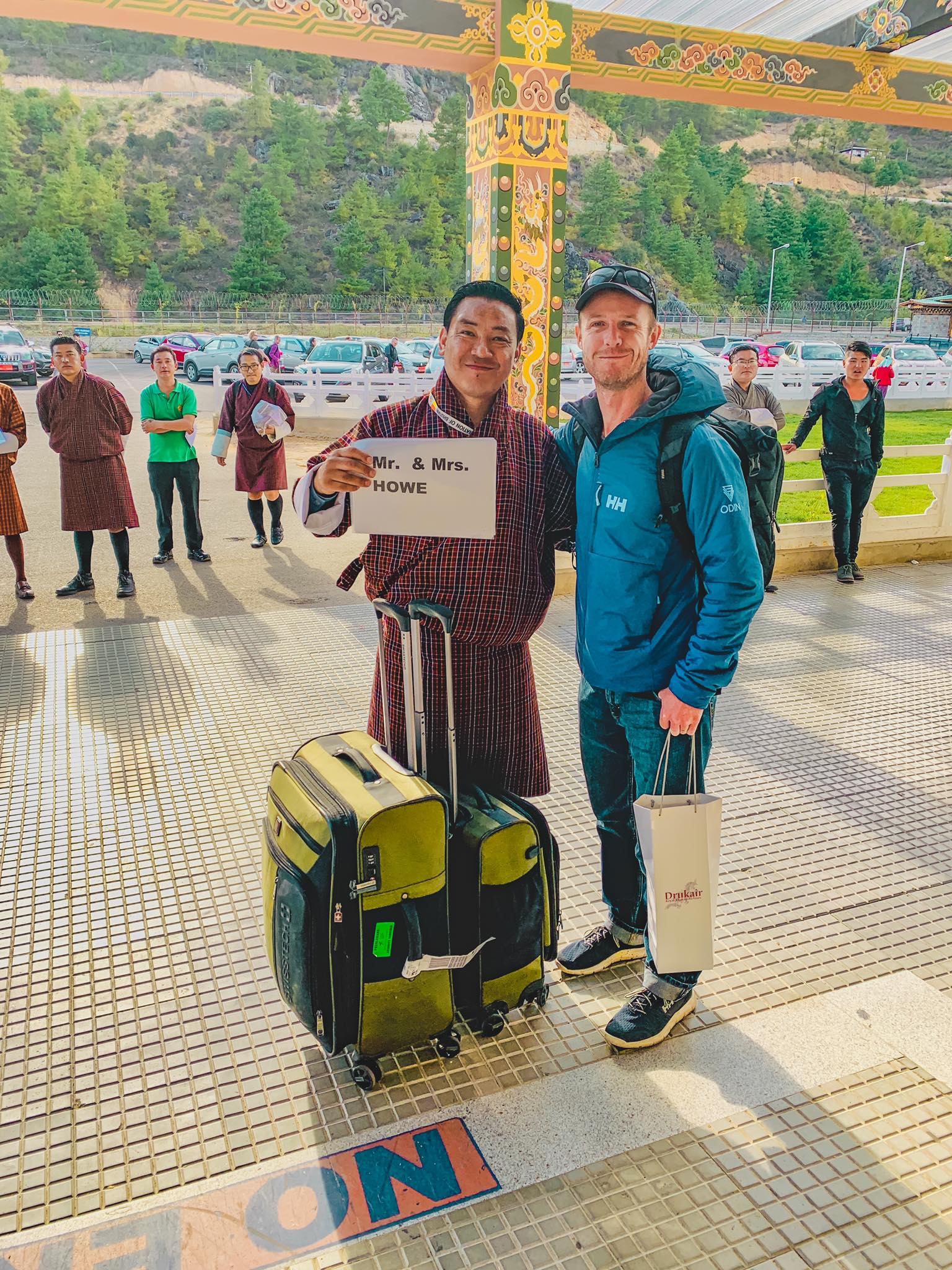10 Things to Do in Bhutan – Our Bhutan Travel Guide to Thimpu, Paro & Punakha
Have you been planning a Bhutan adventure of your own but not sure about the best things to do in Bhutan?
Imagine waking up in the morning and looking out your window to find yourself surrounded by mountains and trees, with a view to ancient temples and monasteries in every direction?
Why not turn this dream into a reality and visit Bhutan?
Bhutan is mostly known in recent times as the only carbon negative country in the world. And what does that mean, you might ask? It means this country absorbs more carbon dioxide in the atmosphere than it actually produces! The country has also taken measures to make sure that they’re caring for the environment and their heritage so they can preserve it for generations to come. Amazing, right?

Another thing that brought this country’s name to the headlines recently is the famous story of its present King and Queen. People couldn’t help but gush over how romantic their fairytale ending came to be. The royals are now proud parents to a son whose birth was celebrated by the country by planting trees – a record-breaking activity initiated by the townspeople.
Before you dive into the 10 things to do in Bhutan below, here’s what we did on our own trip to Bhutan with Aiming Bhutan Tours!
Table of Contents
Day 1 in Bhutan – Paro and The Tiger’s Nest
We started our morning with a stunning sunrise from our bedroom window, ready to start exploring Bhutan! We had an amazing Bhutanese and Indian breakfast in the Le Meridien Hotel restaurant, then met our awesome guide, Tashi in the reception.
After a 20 minute drive, we arrived at the start of the path to the Tiger’s Nest temple, or Paro Taktsang. One of the most famous Buddhist temples in the world and certainly the best-known in Bhutan, Tiger’s Nest was built in the 7th century on a steep cliffside at 10,232 feet (3119 metres) high! The hike is slightly challenging because parts are quite steep and rocky, but we saw people of all ages making their way up the winding slopes.
The views as we climbed the mountain were incredible and it didn’t take long before we started to see the Tiger’s Nest Temple in the distance. Cameras are not allowed inside, but there are multiple temples, shrines, and altars within the temple complex. They all have a unique purpose, like prosperity, health and longevity, guru and other important aspects of Buddhist life.

From there we visited the National Museum of Bhutan, where there are lots of exhibits of the natural and human history of the country. The old museum was located inside an ancient fort, but it was damaged in an earthquake. Although they repaired it they decided to build a whole new building to house the museum.
Finally, we visited a local homestay where many visitors stay in Bhutan instead of hotels. This was actually an old farmhouse converted to house tourists. Outside in what looked like a converted barn building, there were hot stone baths where guests can relax and soothe aching muscles after a full day of hiking and exploring.
Day 2 & 3 in Bhutan – Paro to Thimphu
We left Le Meridien Paro in the morning straight after breakfast and headed for Thimpu. It was only about an hour or so drive so we had plenty of time to stop for photos on the way.

On the way to Thimphu we stopped at an ancient monastery which could only be accessed by the oldest rope bridge in the country. Before checking into Le Meridien Thimpu, Mr Tashi took us to see the biggest Buddha statue in Bhutan, Buddha Dordenma, which overlooks the valley and city of Thimpu. It’s a beautiful sight at the top of a hill and painted in bright gold. This Buddha is 169 feet tall!
Later, as we arrived in Thimpu to check into our hotel, we passed the main Buddhist Stupa of the city, where there was an important spiritual event happening, 7 lines wishful feeling chanting mantra of Guru Rinpoche. Hundreds of local residents had arrived and were waiting to make offerings, to recite mantras and to receive the blessings of the Guru Rinpoche. We were really lucky to have the chance to be there at just the right time!

Day 4 & 5 in Bhutan – Thimphu to Punakha
Our last day trip in Bhutan took us from Thimphu to Punakha, one of the most spectacular tropical valleys in the country. The route took us over the Dochula Pass, a high mountain pass with 108 memorial stupas built at the highest point. We stopped at the top to see the view of the Himalayas and walked through the stupas, before continuing down through the mountains to lower altitude.

The highlight of this day trip was a visit to the Punakha Dzong, the second Dzong ever built in Bhutan and many say the most beautiful! Dzongs in Bhutan have and still do serve multiple purposes – administrative centers, fortresses and housing for Buddhist monks. There are three massive courtyards with a maze of steps leading up and down, while there are several temples inside for prayers and offerings.
The paintings and the architecture are probably the most beautiful we saw on the whole trip. The second big highlight of the day was seeing the Temple of Fertility and the story behind it. A trip to Punakha would usually be an overnight one, but with only a short time to spend here, we made it a day trip. This meant quite a lot of driving for one day, but we knew that before we started. Although we really enjoyed it, we would recommend following the tour operator’s advice and staying overnight!
Get to know more about this majestic kingdom, its vast natural beauty, and its rich culture by trying out some of the activities below:
10 Things to do in Bhutan
1. Try the traditional dishes
If there’s one word to describe Bhutanese cuisine, that would be spicy.

Chilies have already become such a staple in almost every Bhutanese food that a dish just won’t be complete without it. From their most popular dish, Ema Datshi, to the Ezay Sauce they serve Hoentay with, the Bhutanese people make it a point not to leave the kick of the chili out!
Of course, if you’re not so used to the burning sensation in your mouth that comes with every bite, you can simply ask the cook or chef to tone it done a little bit for you and they’ll gladly do.
2. Have a shot of Arak/ Ara
Alcohol is already a staple during celebrations and Bhutan sure has a strong contender to bring to the table!
Ara or sometimes known as Arak is a strong alcoholic drink made from any kind of grain that is native to the regions of Bhutan. They aren’t produced massively like the drinks that we’re used to and are often homemade. Egg and butter can sometimes be added to the mixture to make it less intoxicating.
3. Attend a festival

As a Buddhist country, Bhutan celebrates quite a few festivals all year round. From colorful clothing to dances and even masks, these events are certainly what you should witness for yourself to see the Bhutanese culture in full bloom.
Locally called “Tshechu”, these festivals are believed to bring luck and give merit to anyone who witnesses and participates in them.
During the summer, you can join in on the fun by playing local sports during the Haa Summer Festival held in the Haa Valley. It’s basically a fun celebration of the Bhutanese culture in general.
If you want to witness their traditional mask dancers, you can go ahead and visit during Paro Tshechu in the springtime or during Jambay Lhakhang Drup in October. Both of these festivals aim to honor Guru Rinpoche, an important spiritual figure in Buddhism.
Of course, another one that you should definitely join is the Thimphu Tshechu held in the country’s capital, Thimphu. It’s a three-day affair with lots of dancing and religious performances involved.
4. Find peace in monasteries
There’s a good number of these scattered all over the country, thanks to it being primarily Buddhist.
One of the most famous monasteries in the country is the Paro Taktsang also knowns as the Tiger’s Nest Monastery which you’ll easily recognize as it always comes up in search engines once you type in Bhutan. Located in the upper Paro valley, you’ll have to take a short trekking trip for you to reach this place.
In Thimphu, you’ll find the Memorial Stupa of Thimphu Chorten which is a distinctive structure painted in pristine white and beautifully highlighting the famous photograph of Druk Gyalpo.
Visiting Bumthang, you’ll find Kurjey Lhakhang which is known to be one of the most ancient monasteries in the country where the first three kings of Bhutan were laid to rest. It is also said that Guru Rinpoche left his body print inside this majestic place.
5. Go hiking in the mountains
Since Bhutan is sitting just at the foot of the Himalayas, it offers a perfect landscape for the adrenaline junkies who want to go hiking aside from sightseeing!
The treks vary in difficulty and number of days to complete, with some taking just three days and some going as long as twenty-five!
If you’re still at the beginner’s stage or are only looking to go on an easier trek, you’ll find Nabji Korphu Trek which gives you a tour around the scenic Trongsa Dzongkhag. While taking this route, you’ll have your first-hand experience living the traditional Bhutanese life while spending time with the locals at the villages during the night.
For those who are up for the challenge, take the Snowman Trek II that goes from Laya all the way up to the high altitudes of the Himalayan mountains! This is one of the most difficult treks in the world, with winter temperatures sometimes covering the trail in the snow. Those who dare take this challenging trail get rewarded by some of the most beautiful sights you’ll ever see in the world.
6. Go bird watching
There are few places in Bhutan where you’ll find these fascinating creatures temporarily taking shelter under its green landscapes.
If you’re in the area of Punakha take a trip up north and head on towards Jigme Dorji National Park where it is said that you can get a chance to go bird watching.
Another famous bird watching area is the Phobjikha valley where you’ll even get the chance to watch some endangered species living in their own natural habitat. Visit the area around late October to get a better chance of witnessing them.
7. Witness an archery match

Archery, most commonly known as Dha in the Dzongkha language, is the national sport of Bhutan. The country even has an Olympic archery team as the sport became popular inside and outside their kingdom.
Nowadays, you’ll find archery tournaments and competitions being held throughout the country and also during festivals.
If you want to watch a game for yourself, you can head over to Changlimithang Stadium in the capital Thimphu which is at the center of the country’s archery world.
8. Buy some local produce from the weekend market

The weekend market near the Wang Chhu River in Thimphu is where local farmers gather to sell their harvest in the market. You’ll find a wide assortment of fresh produce which has attracted people from all over.
If you walk a little more, you’ll also find a line of stalls selling other products like clothing, handicrafts and more.
9. Listen to tales of mermaids and kings

As if the magical surroundings aren’t enough to make you feel like you’re straight out of a storybook, you’ll also find local tales of mermaids and ancient kings being passed on by the locals in the villages of Adha and Rukha.
To get the authentic Bhutanese experience, you can have a homestay arranged for you in any of these villages so you can stay with the farmers and see how their daily lives unfold.
10. Take a relaxing dip in the hot springs
A six-hour trip might sound arduous to most until they find out that they’ll find a relaxing hot spring at the end of the line.
The Gasa Tshachu has three bathhouses with varying temperatures the guests can choose from. The facilities are also properly maintained to make sure they’re always clean and hygienic.
11. Find accommodation in Bhutan
What You Should Know Before Visiting Bhutan
Bhutan is one of the countries with the most systematized way of accepting visitors into their land. To get a tourist visa, you must first contact an organized tour operator and send over the details page of your passport so they can apply for papers on your behalf. Once they’re all taken care of, you’ll eventually receive a visa clearance letter that you’ll present upon arrival.

- Arranged tours in Bhutan are also maintained at a certain minimum price ($250/day during high season and $200/ day during low season) which already includes your meals, your accommodation, and even the interpreter and transportation.
- There are only two airlines operating in Bhutan – the national airline Druk Air and privately owned Bhutan Airlines. These two would only allow you to book tickets with them once they get a go signal from the government, saying you’ve already processed your visa.
- With regards to your safety in Bhutan, there’s no need for you to worry as it’s a very safe destination with the rare occurrence of even the pettiest crimes. The worst you’ll probably have to endure are bad weather, altitude, and carsickness.
- There’s also mobile and internet services in the country, enabling you to connect with your loved ones back home. Granted, connections might not be the strongest, but it’s totally understandable, considering Bhutan is still a constantly developing country.
- There’s really no such thing as the “best” time to get to Bhutan as every season unveils a different side of this paradise. Go watch the flowers bloom in spring and summer. Join the harvest season during the fall. Enjoy the cold Himalayan weather in winter. Whatever season you choose, Bhutan will surely win you over.
Bhutan is truly one of the last paradises on earth that you should consider visiting at least once in your life!

Are you on Pinterest? Pin these!








































